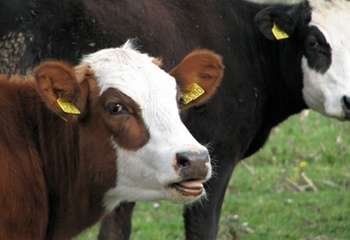Scientists targeting disease-causing bacteria present on cows' skin in attempt to prevent contamination

If you can't kill them, trap them. Such is the fate that scientists are reserving to pathogenic bacteria, such as the infamous E. coli. These bacteria may contaminate meat in abattoirs, when small traces of excrement on the hide come into contact with the carcass. "Some microbial contamination of the carcass, including food-borne pathogens, can occur even when best hygiene practices are followed," says Laura Wyness, senior Nutrition Scientist at the British Nutrition Foundation, UK, which is a partner to ProsafeBeef, a EU-funded research project designed to advancing beef safety and quality.
To get rid of bacteria, and improve the safety of beef meat, project scientists have developed an ingenious solution. Their idea is to spray the carcasses before skinning them with a liquid product called shellac. This is a natural resin produced by the female lac bug. When dissolved in ethanol, shellac forms a sticky glaze that is used to covers the hide, thus entrapping dirt and bacteria, and preventing them from contaminating the meat. Shellac, a sort of natural plastic, has been used for more than 3,000 years, and is still employed today in liquid solutions to coat furniture and musical instruments. Besides, it is edible, making it suitable as a glazing agent; it is sold commercially as additive E904, used in foods and drugs.
"Shellac may be a better alternative to disinfectants such as lactic acid, which is used in some countries to wash the carcasses but is not permitted in the EU," Geraldine Duffy tells youris.com, "Indeed, our data show that immobilising bacteria with shellac is more effective than other hide decontamination methods." Duffy is the Head of food safety at the Teagasc Food Research Centre in Dublin, Ireland, the institution coordinating the project. Current rules in the EU provide for a "clear-cattle" policy, which include visual inspection, clipping dirt and water washing of carcasses. "Disinfectants are not allowed on the rationale that they may mask unruly practices," says Duffy.
To date, researchers have tested the shellac solution in abattoirs in Serbia and in the UK. They found that it reduced the amount of bacteria in meat up to 100 fold, better that what they could achieve with disinfectants. Duffy cautions that further steps are needed before shellac becomes a commercially viable strategy in the meat industry. "We will need to develop this treatment into a cost-effective solution, and figure out the best way to fit it into the abattoir line," she says.
Experts welcome this solution. "[The shellac-based] technique represents a paradigm shift from killing the microorganisms on the hide to actually immobilising them [...]. It has good potential for improving the microbial safety of beef," says Aubrey Mendonça, an associate professor at the department of food science and human nutrition at Iowa State University, in Ames, USA.
This approach should, however, be considered in the future along with other technologies, according to Timothy Bowser, a food process engineer at Oklahoma State University, in Stillwater, USA, affiliated with the Intota Expert Network. However, he points out that moisture may limit the efficacy of the treatment: "in the winter, many cattle would often enter the plant covered with about 5 cm of frozen mud. […] Moisture control, or finding an immobiliser that is more effective in the presence of moisture, may be a key to future success."
Source: Youris.com















